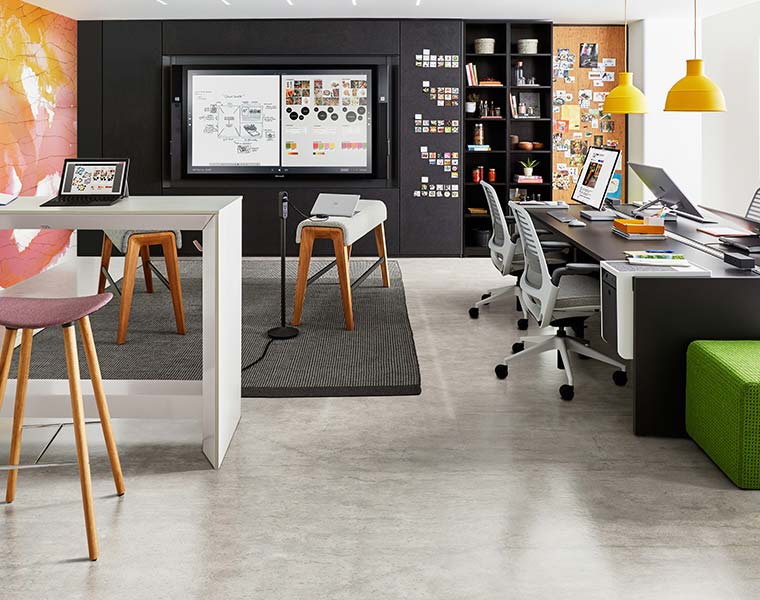According to the HR Review CBRE report for July 2017, 40% of businesses are positioning space agility as a key part of their wider business strategy. As advocates of agile working and activity-based working environments here at Penketh Interiors, this is a figure we’re pleased to see.
However, there is still the other 60% of businesses who aren’t yet including freedom of movement around the workspace as a prolific part of their ongoing agendas.
For this reason, we want to discuss the main advantages of activity-based work (ABW), then highlight some of the most prominent concerns around it, along with our recommended solutions.
The advantages of activity-based office design:
A boost in productivity and engagement – Enabling staff to work in the setting which they feel would best cater to the task in hand has been proven to increase motivation levels, creativity, concentration and collaboration with colleagues across departments.
In fact, according to global research carried out by Steelcase, a huge 88% of highly engaged employees feel they have control over their work experience.
A better use of space and money – In traditional workspace setups with dedicated desks, business owners are typically forced to pay for desking, furniture, storage and equipment for every single member of staff.
ABW environments enable business owners to rethink the use of space by incorporating things like hot desking, breakout areas, collaboration spaces and social spaces to reduce the amount of redundant office space.
This optimisation of space then lowers the amount of money being wasted on unused space and facilities. A study carried out by Interpolis revealed a 24% reduction in occupancy costs after making the transition into activity-based working.
Attraction and retention of talent – Adopting modern work concepts such as ABW demonstrates that you’re a progressive company which prioritises the requirements and wellbeing of your staff, as well as how to unlock their full potential through resource and design.
According to data from a Deloitte study, 84% of millennials report some degree of flexible working within their workplaces, which proves that agile working and activity-based environments are a great way to recruit and retain the best new talent.
Improved health and wellbeing – As well as encouraging more physical movement around the office which is great for getting the muscles working and blood pumping, ABW can have a significantly positive effect on mental wellbeing of staff.
Providing staff with more choice and control will lead to improved job satisfaction and a reduction in frustration and stress levels. ABW also makes the workspace a more level playing field by breaking down the professional hierarchy somewhat which will improve working life for those who feel intimidated or unable to voice their ideas and opinions in traditional work settings.
The disadvantages of activity-based working:
Now we’ve covered the main pros of implementing activity-based working, let’s have a quick look at a few of possible downsides and how we would suggest resolving them…
Problem: Excess noise creating distractions, compromising privacy, communication and concentration.
Solution: Incorporate acoustic office furniture and things like focus pods or space division (e.g. BuzziVille) where staff can go to concentrate on individual work or hold confidential meetings and phone calls.
Problem: Resistance to change – this may come from older members of staff or those who prefer traditional working environments.
Solution: Hold workshops and training to familiarise staff with the benefits of new furniture products, technology and work settings and how to best utilise them.
Problem: Work settings being occupied on a first come, first served basis.
Solution: Introduce an electronic booking and space management system such as Reserva or RoomWizard (pictured above) to eliminate disruption, overlapping and what we like to call ‘space hogging’.
Problem: Reduced personal storage and safety of belongings.
Solution: A tech-enabled storage system such as the Spacestor Hot Locker which enables staff to allocate themselves a personal locker via their mobile phones on a requirement basis.
